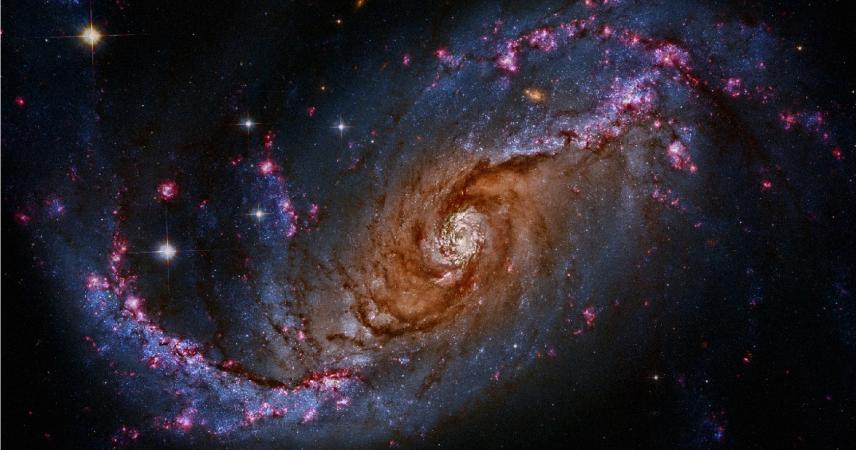Galaxies are structures held together by gravity. Inside are gas and dust, billions of stars and their planetary systems, black holes and vast amounts of mysterious dark matter. We belong to the Milky Way Galaxy, which, according to astronomers, contains between 100 and 400 billion stars.
How many galaxies like ours are there in the universe? The images received by the Hubble Space Telescope and, more recently, by the new James Webb Space Telescope, do not allow us to estimate a figure: there are possibly about 200 billion galaxies.
Galaxies come in different shapes, sizes and colours, depending on how much dust and stars they contain, how the stars within them orbit, and how old they are. There are spiral, elliptical, lenticular or irregular galaxies.
In this visual and tactile installation we present 5 different models of galaxies. We invite you to observe their shape and appreciate their texture in the module on the left of this panel.
We start from left to right. The first Galaxy is called Messier 100. If you run your fingers over the 3D print, at its centre you will be able to notice a round bulge that corresponds to the bulb, which is where two spiral arms that wind clockwise start from. It is what is known as a face-on spiral galaxy.
On the right is Messier 105, an elliptical spherical galaxy, whose shape is reminiscent of a football. It feels soft to the touch. Its highest densest region is in the middle, and it gradually gets smaller towards the edges, which indicates that the density of stars at its periphery is lower.
We then go on to NGC 5866, a lenticular tilted galaxy. If you run your hands along it you will realise that it looks like a rugby ball. Its densest point is at its centre, which is where the density of stars is higher. This is an unusual galaxy because it has a dust trail, which can only be seen on the screen.
On its right, Messier 109 is a kind of barred spiral galaxy. Unlike the other galaxies, its inner ring is weaker. In the middle of the 3D print, you will find a round bulge that feels soft to the touch. Around this two crests form that point outwards and emerge in a clockwise spiral. As this is a tilted spiral, these arms become more oval-shaped as they rotate around the galaxy.
Finally, Messier 51, known as the "Whirlpool galaxy”, is a face-on galaxy merger. It contains a bulge in the middle and two well defined spiral arms crossed by dust lanes. One of its arms is much longer than the other. If we track it right to its end, it leads us to another galaxy with a very smooth structure. This is a companion galaxy that it interacts with, by exchanging gas and stars.
These 3D prints form part of ‘AstroBVI’, an educational kit for the visually impaired community funded with support from the Ministry of Universities, Research and Innovation of the Regional Government of Andalusia (EMERGIA20_38888) and the International Astronomical Union.
